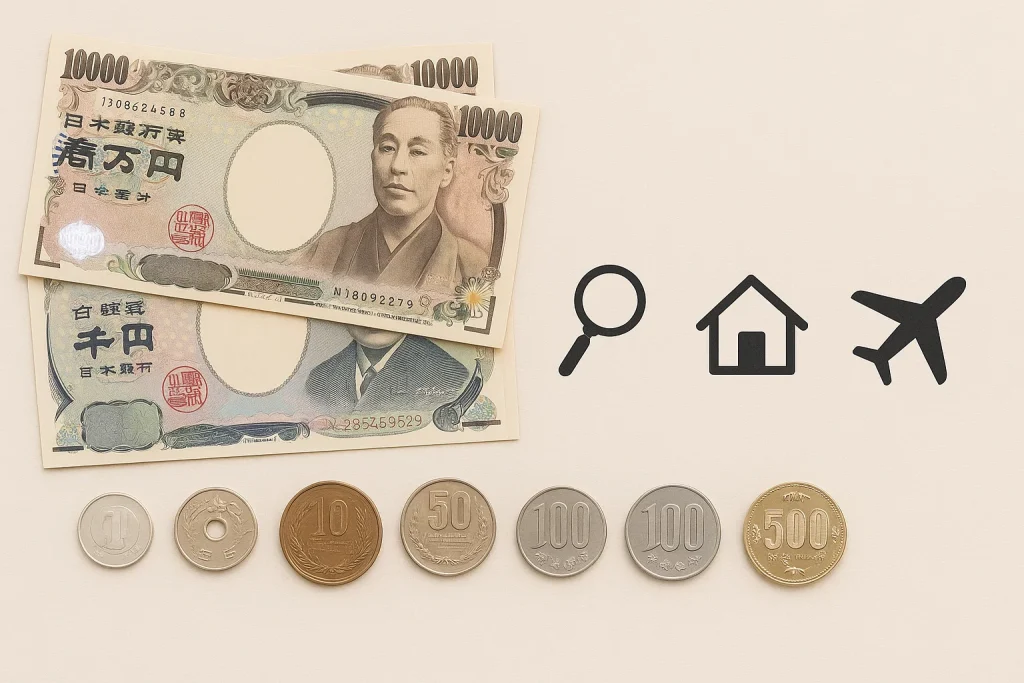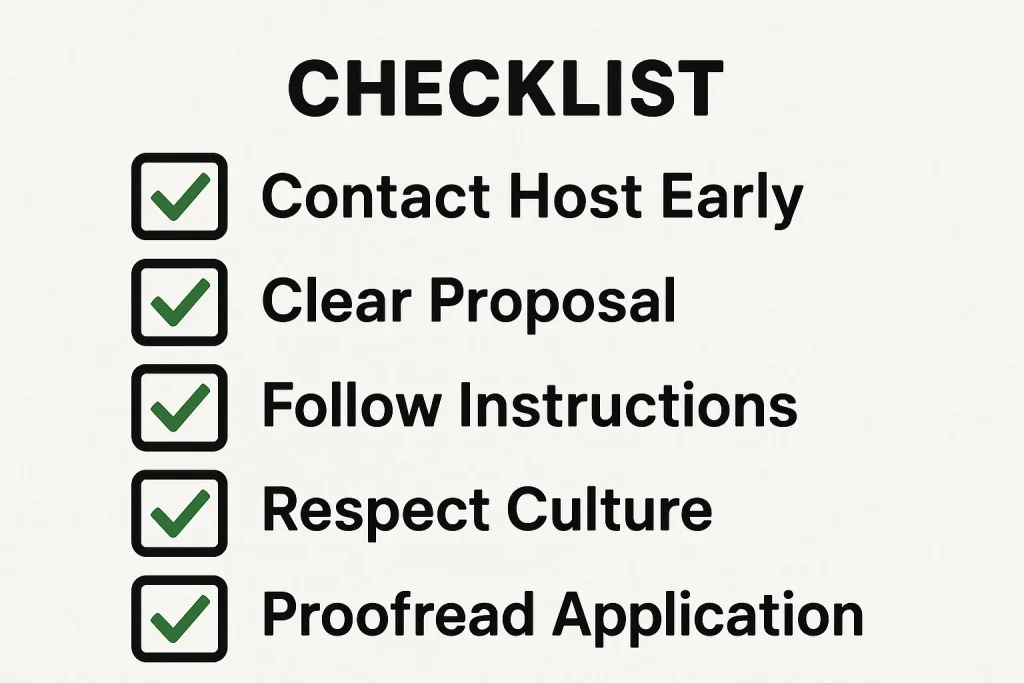As someone who’s spent years researching and writing about global education programs, I’ve seen my fair share of scholarships and fellowships come and go. But few have the lasting impact and prestige of the Japan Matsumae International Foundation Fellowship.
Imagine this: You’re a researcher with a big idea—maybe something that could transform your field or bridge academic gaps between nations. But funding and opportunity are hard to come by. That’s where the Matsumae Fellowship steps in. It’s not just a financial aid program; it’s an invitation to dive into Japan’s rich academic culture, collaborate with respected scholars, and gain access to world-class research facilities.
This guide is for those who want more than just funding—they want meaningful academic exchange, a cultural experience, and a chance to contribute to something bigger. Whether you’re in the early stages of your academic career or looking to expand your research globally, this fellowship opens doors.
In the sections that follow, I’ll break down everything you need to know: from eligibility requirements to real-life tips on making your application stand out. You’ll also find firsthand insights, practical advice, and clear breakdowns to make the process feel less overwhelming and more achievable.
So, let’s explore what makes the Matsumae Fellowship not just another line on your CV, but a truly life-changing experience.

What is the Japan Matsumae International Foundation Fellowship?
The Japan Matsumae International Foundation Fellowship is more than just a research grant. It’s a cultural bridge. Established by the Matsumae International Foundation (MIF), this program invites researchers from around the world to pursue academic work in Japan for a limited time.
What makes this fellowship unique is its mission. It was created by Dr. Shigeyoshi Matsumae, founder of Tokai University, with a clear goal in mind—to foster peace and understanding by promoting academic exchange between Japan and the rest of the world. The program supports individuals who are not Japanese citizens and want to carry out independent research in collaboration with a Japanese host institution.
Unlike many other fellowships that focus only on funding, the Matsumae Fellowship encourages cross-border dialogue, mutual respect, and research that has global significance. Fellows are welcomed not just as researchers but as guests contributing to Japan’s intellectual and cultural landscape.
So whether you’re diving into physics, philosophy, or environmental science, this fellowship offers a chance to make a real impact—both academically and personally.
Who Can Apply? Matsumae Fellowship Eligibility Criteria
Not every research grant is as accessible as the Matsumae Fellowship. But there are still a few key boxes you’ll need to tick before applying.
Here’s a breakdown of the eligibility criteria:
- Non-Japanese Citizenship: You must not be a Japanese national. This program is strictly for international researchers.
- Doctoral Degree: Applicants need to have a Ph.D. or an equivalent doctorate in their field at the time of applying.
- Under 49 Years Old: To ensure early- or mid-career engagement, applicants must be under the age of 49.
- Language Proficiency: While Japanese is not required, you should have a solid grasp of English. It’s the common language for research collaboration.
- Academic Placement: You must secure an invitation from a host institution in Japan before applying. This could be a university, research center, or similar.
- No Recent Stay in Japan: Preference is given to those who have not recently lived in Japan, to promote new exchanges.
Fields accepted include natural sciences, engineering, medicine, and the humanities. So whether you’re working on clean energy or ancient literature, there’s a place for you.
For more details on eligibility, I recommend visiting the official fellowship guidelines.
Fellowship Benefits – What You’ll Receive as a Matsumae Fellow

When I first reviewed the Matsumae Fellowship details, I was impressed by how comprehensive and generous the support is. Unlike some research fellowships that leave you juggling budgets, this one covers almost everything you need to focus on your work.
Here’s what you can expect:
- Monthly Allowance: Fellows receive JPY 220,000 (about USD 1,400) per month for living expenses.
- Arrival Fund: A one-time payment of JPY 120,000 helps with relocation and settling in.
- Airfare: A round-trip economy-class flight between your home country and Japan is covered.
- Insurance: Health and accident insurance are included during the stay.
- Research Support: Many host institutions offer access to labs, libraries, and faculty networks.
Fellowship Benefits at a Glance
| Benefit | Details |
| Monthly Allowance | JPY 220,000 (approx. USD 1,400) |
| Arrival Fund | JPY 120,000 (one-time payment) |
| Airfare | Round-trip economy-class ticket |
| Insurance | Health and accident coverage during stay |
| Research Resources | Access to facilities at host institution |
| Duration | 3 to 6 months |
| Field Flexibility | Natural Sciences, Engineering, Humanities, Medicine, and more |
These benefits are not just about money. They remove financial stress so that you can focus entirely on your research and cultural experience.
For updated conversion rates and cost-of-living information in Japan, I suggest checking XE Currency and Numbeo’s Cost of Living in Japan.

How to Apply for the Matsumae Fellowship – Step-by-Step
When I first looked into the application process for the Matsumae Fellowship, I was relieved to see how straightforward it is. But like any top-tier opportunity, attention to detail can make or break your application.
Here’s a simple step-by-step guide to help you apply:
1. Check the Official Timeline
Applications for the 2025 intake usually open in April and close by the end of June. Always check the official announcement page for deadlines and updates.
2. Secure a Japanese Host Institution
Before you apply, you need to find a Japanese university or research institution willing to host your research. This is one of the most important steps. You must obtain an official invitation letter from your host professor.
Tip: Start early. Finding a host can take time, especially if your topic is niche.
3. Prepare Required Documents
Here’s what you’ll need to prepare:
- Application form (download from the MIF site)
- Curriculum vitae with a recent photo
- List of publications
- Research proposal (within two A4 pages)
- A signed invitation letter from your host in Japan
- Recommendation letters from two individuals
4. Craft a Strong Research Proposal
This is your chance to shine. Your proposal should:
- Be clear, focused, and aligned with Japan’s academic strengths
- Include your research objective, methodology, timeline, and expected impact
- Mention how your work could benefit both Japan and your home country
You can find great tips on writing proposals from academic blogs like PhDVoice or university career centers.
5. Send Your Application
Submit your full application by post (not email!) to the Matsumae Foundation’s office in Tokyo. They do not accept digital submissions, so plan for international mail delays.
Remember: Late or incomplete applications will not be reviewed. Triple-check everything before sending.
Choosing a Host Institution in Japan
One of the most critical steps in the Matsumae Fellowship process is selecting your host institution. This isn’t just a formality—it’s your academic home in Japan.
Why Your Host Matters
Your host institution will provide more than just a desk or lab. It’s where you’ll collaborate, share ideas, and get support during your stay. The right host can make your research experience smoother and more impactful.
How to Find a Host Institution
Here are three proven ways to find a good match:
- Search university faculty pages for experts in your field. Japan has top institutions like The University of Tokyo, Kyoto University, and Osaka University.
- Use research databases like ResearchGate or Google Scholar to find Japanese researchers with similar interests.
- Network through your current professors or advisors. They often have connections abroad.
What to Look for in a Host
- Shared research goals
- A supportive lab or department
- Good communication in English (unless you speak Japanese)
- Willingness to provide a signed invitation letter
Examples of Past Host Universities
The Matsumae Foundation has supported fellows at institutions like:
- Tohoku University
- Hokkaido University
- Keio University
- Nagoya University
- Kyushu University
Reach out respectfully. Introduce yourself, explain your project, and attach a short research summary and CV.
What Happens After Selection? Life as a Matsumae Fellow in Japan
Getting selected is exciting—but what comes next? Life as a Matsumae Fellow in Japan is as rewarding as it is unique. Based on my research and past fellow accounts, here’s what you can expect.
Arrival and Onboarding
Once you’re accepted, the Matsumae Foundation will help with your visa process, arrival logistics, and accommodation planning. They’ll also provide insurance and orientation details.
Most fellows arrive a week or so before their research begins. It’s a good idea to use this time to adjust to the new environment and meet your host team.
Adjusting to Japanese Culture
Living in Japan can be a culture shock at first. But it’s also one of the most enriching parts of the experience.
Expect things like:
- Punctuality and politeness in all areas of life
- Well-organized systems in transport, banking, and healthcare
- Language differences—especially outside urban areas
You don’t need to speak Japanese, but learning basic phrases will help. Apps like Duolingo or Tandem can be a big help before you go.
Working at Your Host Institution
Japanese academic institutions value dedication and focus. You’ll likely have:
- Access to labs, offices, and libraries
- Invitations to seminars or local academic events
- Regular check-ins with your host professor
Use this time to share your work, learn from others, and even co-author papers if possible.
Support from the Matsumae Foundation
You won’t be on your own. The Foundation regularly checks in and offers support when needed. They even encourage you to engage in cultural exchange and local outreach.
Life as a Matsumae Fellow – What to Expect
| Aspect | What to Expect |
| Visa & Arrival | Full support with visa paperwork and pre-departure planning |
| Accommodation | Self-arranged, but arrival fund and host support help cover initial costs |
| Research Work | Independent work, with guidance and collaboration at host institution |
| Cultural Integration | Exposure to Japanese traditions, etiquette, and everyday life |
| Language | English is fine for research; basic Japanese helpful for daily life |
| Foundation Support | Ongoing check-ins, funding stability, and personal development opportunities |
Success Stories and Testimonials from Previous Fellows
Hearing from past fellows of the Matsumae International Foundation is one of the best ways to understand the program’s impact. When I started my research into this fellowship, reading testimonials gave me real hope. It was clear that this program changes lives—not just careers.
Real-World Examples of Impact
Here are a few standout examples from past participants:
- Dr. Ramesh from India spent six months at Kyoto University researching sustainable agriculture. After returning home, he launched a community-led farming initiative that’s still growing today.
- Dr. Maria from Argentina collaborated with researchers at Osaka University on nanomaterials. She later published a joint paper in a top Elsevier journal and is now leading a national research project back home.
- Dr. Ahmed from Egypt used his time in Japan to explore renewable energy solutions. Today, he’s a policy advisor for his country’s Ministry of Energy.
Many fellows say that the Matsumae Fellowship gave them not only academic opportunities but also life-changing personal growth. They speak of the kindness of Japanese hosts, the beauty of the culture, and the confidence they gained from being part of a global network.
You can find more testimonials directly on the MIF official success stories page.
Common Mistakes to Avoid When Applying

As someone who’s worked with scholarship applicants for years, I’ve seen many people miss out—not because they weren’t qualified, but because of small, avoidable errors.
If you’re applying for the Matsumae Fellowship, steer clear of these common mistakes:
1. Waiting Too Long to Find a Host
Many applicants delay contacting professors until it’s too late. Japan values early communication and proper etiquette. Begin your search months in advance.
Tip: Use faculty directories or academic platforms like JSTOR to find professors in your field.
2. Poorly Written Research Proposals
Your proposal is your voice. Don’t just list what you want to do—explain why it matters, how you’ll do it, and what results you expect.
Avoid:
- Vague language
- Overly technical terms without explanation
- Copying sections from past projects
Use tools like Grammarly or ask a mentor to proofread your work.
3. Not Following the Official Guidelines
This seems obvious, but every year people send incomplete applications or forget required signatures. Read the instructions carefully on the official MIF application page.
4. Ignoring Cultural Differences
When contacting potential hosts, don’t be too casual. Use respectful language, be brief, and clearly state your purpose. A formal and polite tone is key in Japanese communication.
Tips to Maximize Your Fellowship Experience
Getting selected is just the beginning. To make the most of your time as a Matsumae Fellow, you need to go beyond the research.
Here’s how I recommend maximizing your stay:
1. Build Meaningful Relationships
Don’t stay isolated in the lab. Attend seminars, join local academic groups, and have lunch with your colleagues. These small interactions can lead to big collaborations.
Use platforms like Meetup to find events near your area.
2. Explore Japanese Culture
Take time to learn about local customs, festivals, and food. Visit places like Kyoto’s shrines, Tokyo’s museums, or Hokkaido’s landscapes. Cultural understanding will deepen your experience.
The Japan National Tourism Organization (JNTO) is a great resource to plan short trips during your stay.
3. Keep a Journal or Blog
Many fellows keep personal blogs about their journey. It helps with reflection, and it can also inspire others from your country to apply. Plus, it looks great on your CV!
4. Share Your Knowledge Locally
If your schedule allows, offer to speak at local high schools or community groups. It’s a powerful way to give back, and it shows the Foundation your engagement beyond research.
Conclusion: Is the Matsumae Fellowship Right for You?
After everything I’ve learned and shared, I can confidently say this: the Matsumae International Foundation Fellowship isn’t just a research grant. It’s a transformational journey.
If you’re an early to mid-career researcher from a non-G7 country, and you want to:
- Conduct impactful research in Japan
- Experience a new culture
- Join a global community of scholars
Then this program is absolutely worth pursuing.
Take the first step. Explore the official site, prepare your documents, and reach out to a potential host today. It could be the beginning of something bigger than you imagine.
And if you’ve already applied or received the fellowship—congratulations! You’re joining a remarkable legacy of global minds united by curiosity, respect, and innovation.